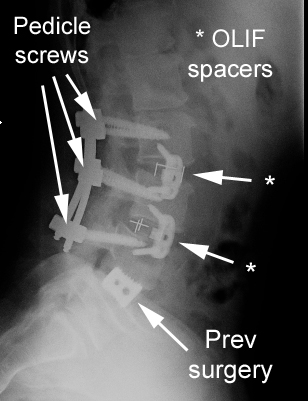Approaches to the front (anterior aspect) of the spine

Sometimes we will have to approach the lumbar spine from the front, or anterior aspect. Often, the approach will include the assistance of a vascular surgeon.
This page will focus on:
Anterior Lumbar Interbody Fusion (ALIF) and Oblique Lumbar Interbody Fusion (OLIF)
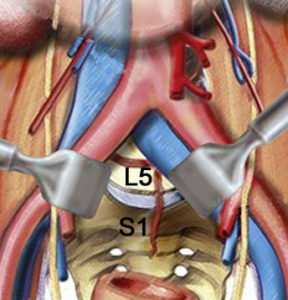
Anterior Lumbar Interbody Fusion (ALIF)
In the illustration pictured to the left, we show the approach the spine at L5-S1 between the iliac vessels which are held out of the way by the retractors. The small vertical red line is the middle sacral artery that is usually ligated (clamped and cut), and we have great exposure to the front of the L5-S1 disc. This exposure can also be used with the access surgeon to get to L4-5 and sometimes also to the L3-4 level.
ALIF example:
X-rays to the right show an example of some xrays of a patient who had an anterior fusion of L5-S1 which healed successfully.

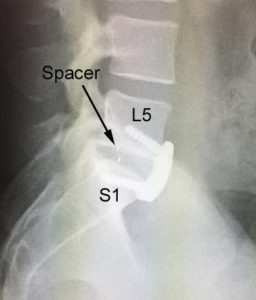
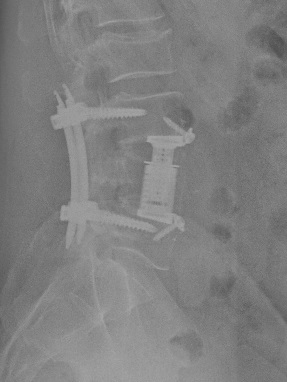

Sometimes the anterior approach is used when the entire vertebral body has to be replaced. Removal of the whole vertebra is called corpectomy, but the spine has to be supported or it will fall forward. The device that replaces the vertebral body and adjacent discs, shown here, is like a small car jack preventing such collapse. The screws and rods placed from the back side help to support the construct.
These surgeries are quiet significant and are done with the assistance of a vascular surgeon.
Oblique Lumbar Interbody Fusion (OLIF)
This technique doesn’t approach the lumbar spine from the front, but rather from the side.
There is an interval behind the intestines that goes in an area called the retroperitoneum, where there is fat that can be easily dissected through, until we reach a muscle on the side of the spine called the psoas.
If we follow the psoas to the front of the spine, there is another place between the vessels and the front edge of the psoas that can be exploited to safely get to the disc to do the fusion.
The spine can be approached through small incisions on the L side of the abdomen to get to a single or multiple levels.

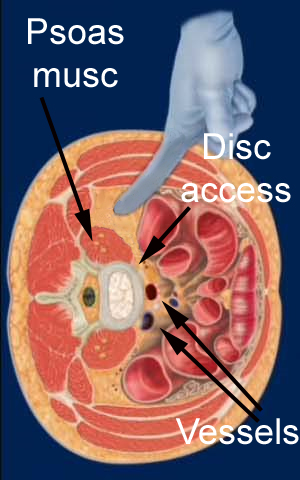
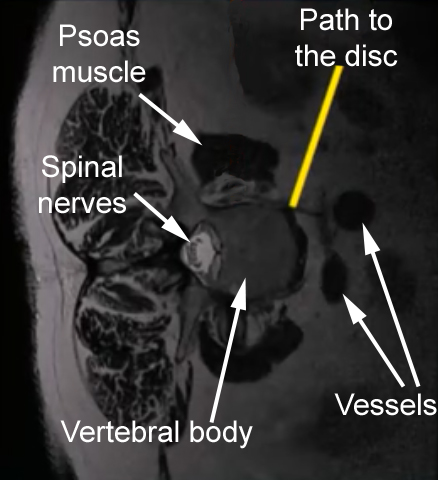
The OLIF procedure, done with the patient laying on their side, with the effect of gravity on the abdominal contents, actually allows for a little better access to the lumbar spine, even in patients who are somewhat overweight.

Here are example x-rays after a patient had the OLIF procedure at L2-3 and L3-4 following a previous fusion at L4-5. There were also pedicle screws placed from behind for additional stability.

